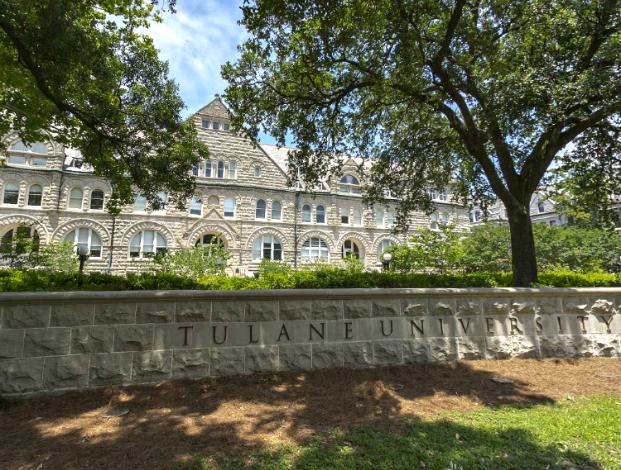| Tulane University |
| New Orleans takes pride in being home to Tulane University, one of the nation's most prestigious universities. Tulane is a member of the Association of American Universities, a select group of the 62 leading research universities in the U.S. and Canada with preeminent programs of graduate and professional education and scholarly research. Of more than 4,300 higher educational institutions rated by the foundation, Tulane remains in an elite category that includes only 2 percent of universities nationwide. Tulane had its origin in the Medical College of Louisiana, which was founded in 1834 - only the second medical school in the South and the 15th in the United States. By 1847, the college had become part of the newly established University of Louisiana, a public institution. In 1884, the university was reorganized and privatized using the endowments of Paul Tulane. Mr. Tulane was a native of New Jersey who had made his considerable fortune in New Orleans. The university was renamed in his honor. Two years later, Josephine Newcomb, donated funds in memory of her daughter to establish Newcomb College, which was the first women's coordinate college within a U.S. university. Tulane moved to its present main campus on St. Charles Avenue in 1894 and it now covers 110 acres. The campus is known for its beautiful large live oak trees and its architecturally historic buildings. It's been listed on the National Register of Historic Places since 1978. There are other campuses, including the Central Business District sites of the School of Medicine, School of Public Health and Tropical Medicine, and Tulane Medical Center. Additionally, their are research centers in Covington and Belle Chase, LA and several satellite campuses of the School of Continuing Studies. Newsweek ranked Tulane 19th among the country's 25 "most service-minded schools." Among medium-sized colleges and universities, Tulane ranks second in graduate schools and 13th in undergraduate schools that produce the most Peace Corps volunteers. Tulane is one of the most geographically-diverse universities in the country - in 2014, there were students from 46 states and 18 foreign countries. Total enrollment in 2015 exceeds pre-Katrina numbers: Tulane University welcomed more than 1,700 first-year students this year, the largest freshmen class in the school's long and distinguished history. -- Nancy |
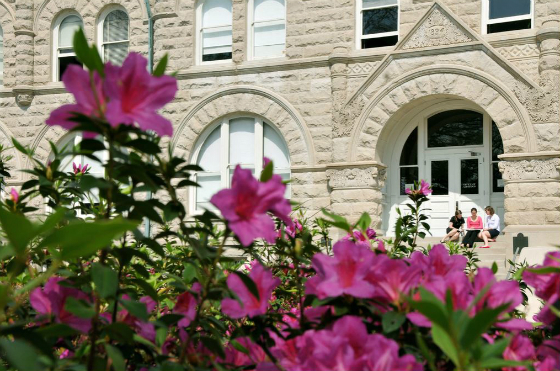
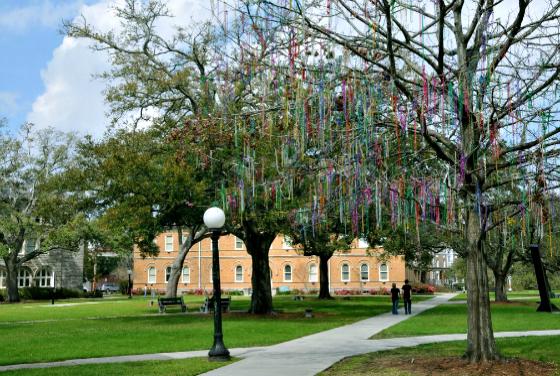
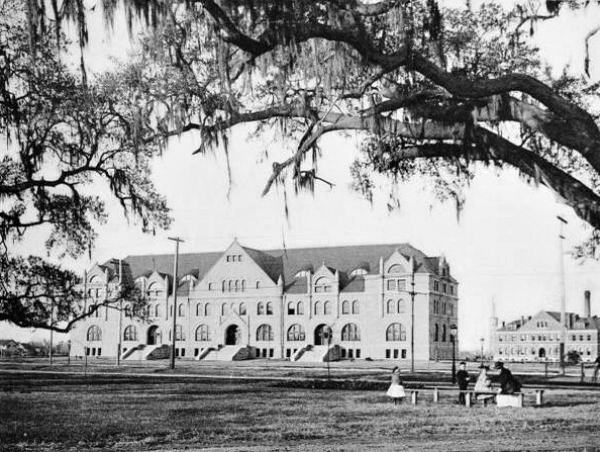
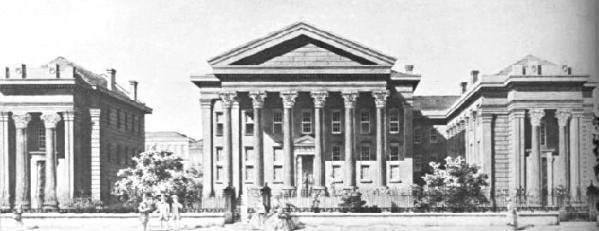
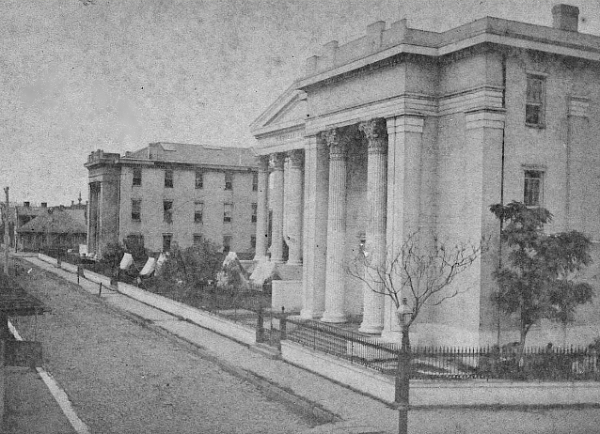
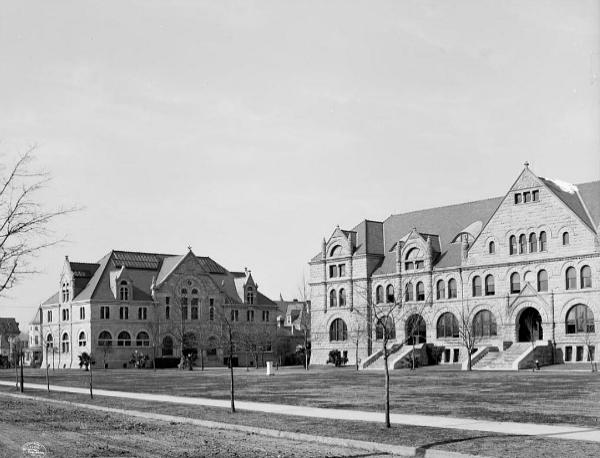
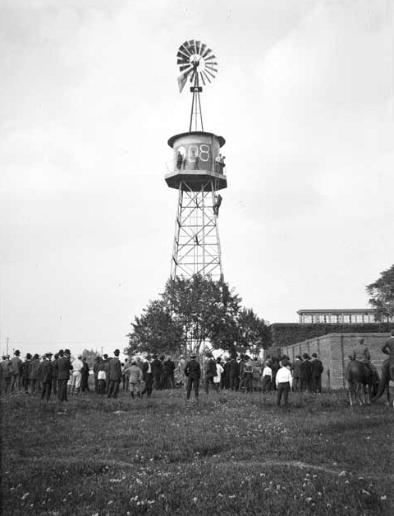
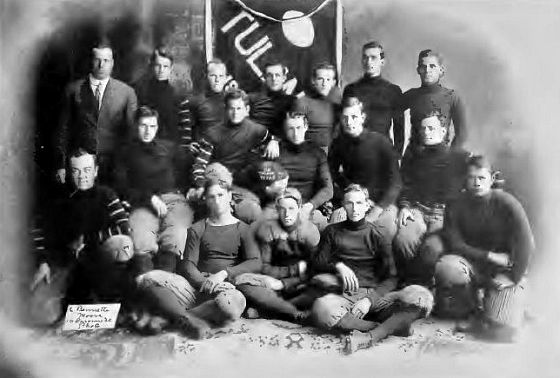
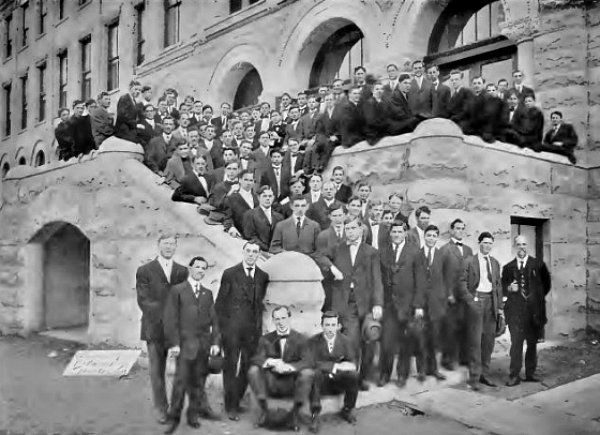
| University of Louisiana, CommonStreet; sketch, ca. 1850 |
| University of Louisiana, Common Street; ca. 1875; buildings were demolished in 1895, a year after the university moved to the St. Charles campus. |
| Gibson Hall, seen from Audubon Park, 1900 - constructed in 1894, Gibson Hall is the oldest structure on the present Tulane campus. |
| By the time this photo was taken in 1906, Tilton Memorial Hall had been built to the left of Gibson Hall. |
| Gathering at the windmill before a football game, 1908 |
| Freshmen football team, 1908 |
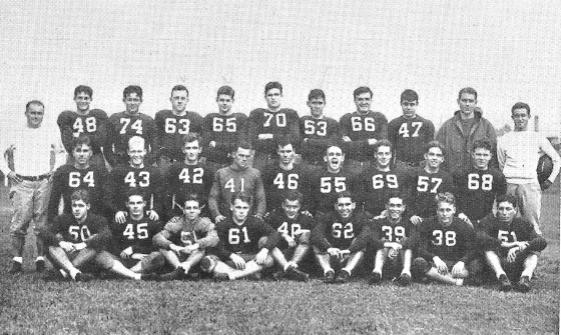

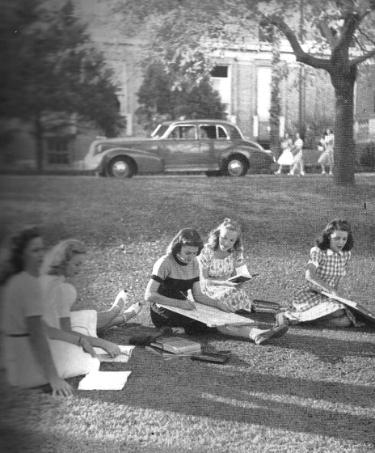
| Freshmen football team, 1934: Standing: Coach Ted Bank, Clack, Armstrong, Moss, Eddy, Sinnott, Loftin, Evans, Schneidau, Assistant Coaches Upton and Richardson Kneeling: Asbell, Owen, Frost, Ott, Odom, Watson, Freese, Monk, Pace Sitting: Flettrich, White, Andrews, Cooley, D., Tull, Giovanni, Offner, Cooley, L., Dalovisio |
| Junior & Senior law students putting together the Law Review, 1940 |
| Newcomb students, 1940 |
| A few current photos that caught my eye |
| Students enjoying springtime on steps of Gibson Hall |
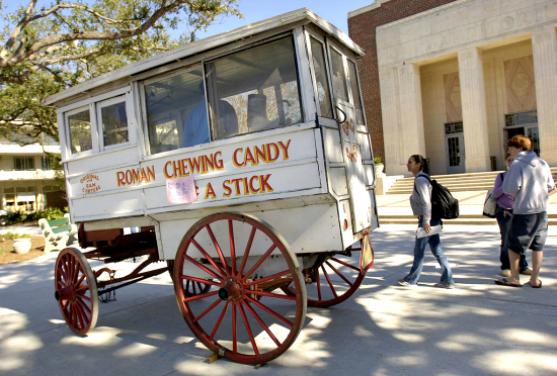
| New Orleans' iconic Roman Candy wagon on campus |
| Mardi Gras beads decorate a tree on campus |
| Freshmen medical class, 1909 |
| Next: Tulane: Then and Now |
| Other pages related to Tulane: James Robb Mansion: Home of Newcomb College, 1890 - 1917 Newcomb College Pictures, 1900-1952 Zemurray House: The President's Home |
| Panoramas |
| Gibson Hall, 1909 - Click on photo to see larger image. |
| Audubon Park on left, Gibson Hall on right, 1910 - Click on photo to see larger image. |
| Photo Credits: Tulane.Public.Relations@Flickr, Unigo, Tulane Yearbooks |
| The link to this page is: http://old-new-orleans.com/NO_Tulane.html Back to Old New Orleans Whispers - Home |
| Click image to enlarge |
| Click image to enlarge |
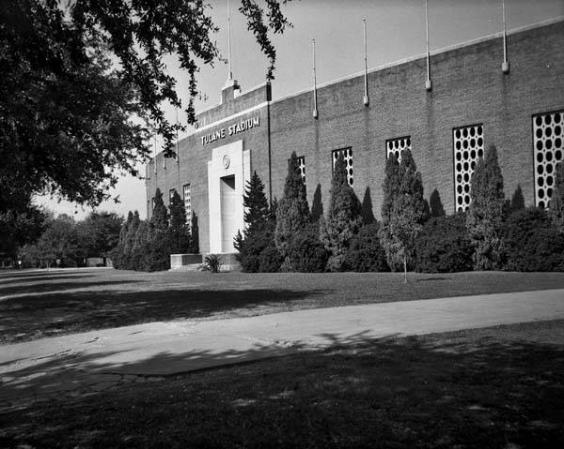
| Tulane Stadium, 1954 |
